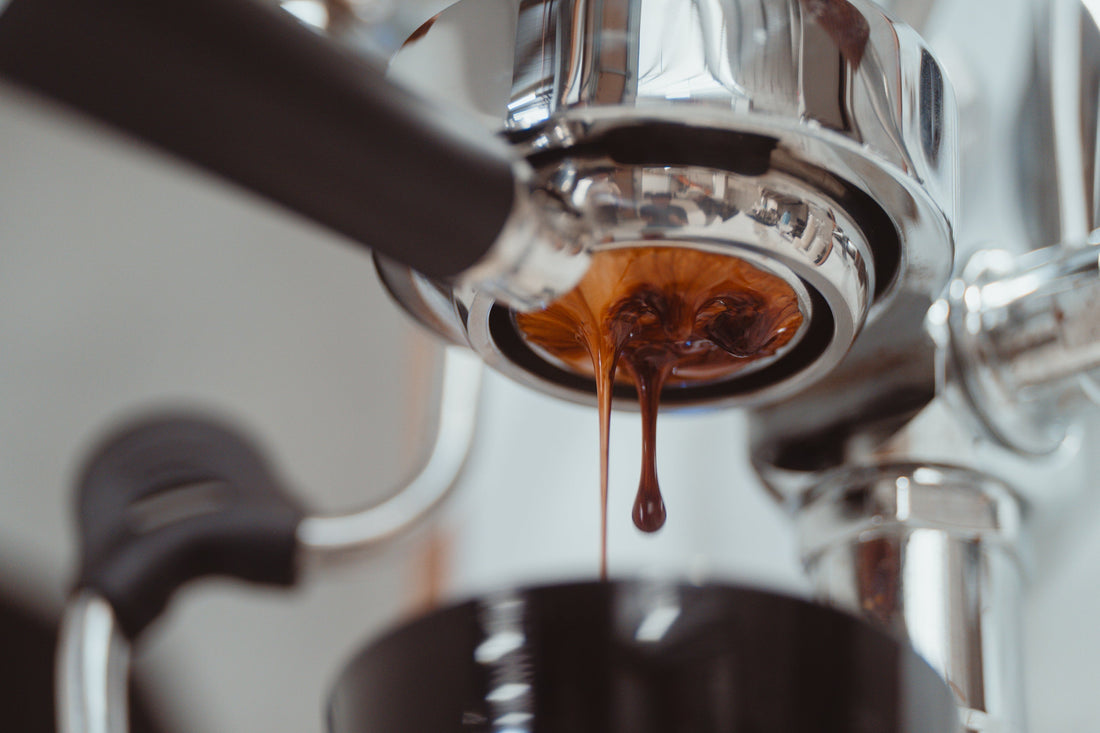
Espresso Brew Guide
Share
Making coffee at home on an espresso machine is a convenient and popular choice. It can often help to save money in the long run if you can sub out your daily flat white or cappuccino from your local café! An impressive addition to your kitchen and great value when hosting guests and events at your home, it is well worth investing in a quality machine to meet your needs.
Top tips to get you started
- Start with a clean coffee machine. This is paramount to getting a good cup and to preserving the life of your equipment. If you have a water reservoir, remove the tank regularly to ensure there is no build up of scale or grime. We suggest using filtered water and always remember to regularly backflush the coffee machine with a coffee machine cleaner.
- Wait for your coffee machine to adequately heat up. Coffee should be brewed at about 93 degrees on most home machines.
- Know your basket size. You should aim to fill your filter basket to approx. 7-8mm from the top. If you have a ridge on the basket, use that as your fill line guide. The coffee should comfortably fit in the basket, without excess spilling or too much empty space.
Choosing the right beans
A good cup of espresso needs a well-developed coffee roast. Make sure to order beans that have been roasted specifically for espresso, as this roast type is longer and designed to bring out the sweetness and boldness in the beans, qualities you need for a good espresso. Espresso roasted beans will look darker than filter roasted beans and will be much more soluble, producing a rich and flavorsome cup.
Keep in mind that not all espresso beans carry the same flavour characteristics or roast profiles, so be sure to adventure into trying different beans (Blends or Single Origins) in order to find what works well for your machine and your palette!
Equipment (what you’ll need to get started):
- Fresh coffee beans (preferably a medium to dark roast or espresso blend)
- Espresso machine
- Grinder
- Filtered water
- Tamper (to press the coffee grounds)
- Tamp Mat (to protect your bench top)
- Scale (optional but helpful for accuracy)
- Portafilter and Basket (should be supplied with the machine)
- Towel (to wipe the portafilter clean)
Recipe
21g in : 32g out
Ratio = 1 : 1.5
Brew Time: 30 – 32 sec
*Please note this is a guide to get you started. Each machine is different and recipes can vary from coffee to coffee, so testing and exploration is a must!
Method
1. Preheat the Equipment:
- Turn on your espresso machine and let it warm up for 15-20 minutes. This ensures a consistent brewing temperature.
- You can also pre-warm your cups by filling them with hot water and letting them sit for a minute.
2. Weigh the Coffee Beans:
- For a double shot of espresso, use 18–22 grams of coffee beans. This can vary based on your filter basket size and the density of the roasted coffee.
3. Prepare the Portafilter:
- Remove the portafilter from the machine and wipe it clean with a towel to remove any old grounds or moisture (which could affect the shot quality).
- Place the portafilter or dosing basket on a scale if you're using one.
4. Grind the Coffee:
- For espresso, you want a fine, powdery grind similar to table salt. The consistency of the grind is crucial; too coarse and the espresso will be weak and sour, or too fine and it could be over-extracted and bitter. Grind the beans and catch the coffee into a dosing basket or directly into the portafilter basket.
5. Dose & Tamp the Coffee:
- Weigh your coffee to ensure you have got your target dose in your basket.
- Using a tamper, press the coffee grounds down firmly and evenly. The goal is to create a smooth, level surface.
- Make sure the coffee is evenly compressed, with no air pockets. Consider using a distribution tool to further aid this process if desired.
6. Brew the Espresso:
- Lock the portafilter into the espresso machine with a cup underneath and start the brew.
- A good espresso shot should take about 28-32 seconds to extract, and you should see a steady stream of espresso flowing from the spouts, starting slow and increasing its speed with time. It should have a rich, golden-brown color, and you should see a layer of crema (the golden foam) on top.
- If the shot is too fast (less than 25 seconds), it is likely the grind is too coarse. If it’s too slow (well over 32 seconds), the grind is likely too fine. So adjust these parameters and try again.
- It’s a good idea to weigh the coffee in the cup to verify that you have achieved the target yield (use above recipe as a guide).
7. Steam Milk:
- If adding milk to your coffee, use the steam wand on your coffee machine to achieve that silky milk texture. Try to angle the steam wand into a position where you can see the milk turning in a whirlpool like manner and continue to steam the milk until you reach your desired temperature and texture. Aim for between 60-75 degrees Celsius for your steamed milk.
- Add your milk to your espresso and enjoy!
Most importantly, coffee brewing should be fun! So experiment with recipes, try new beans and change it up when you get bored…
Check out our range of coffee beans here, to find your next one to explore!
